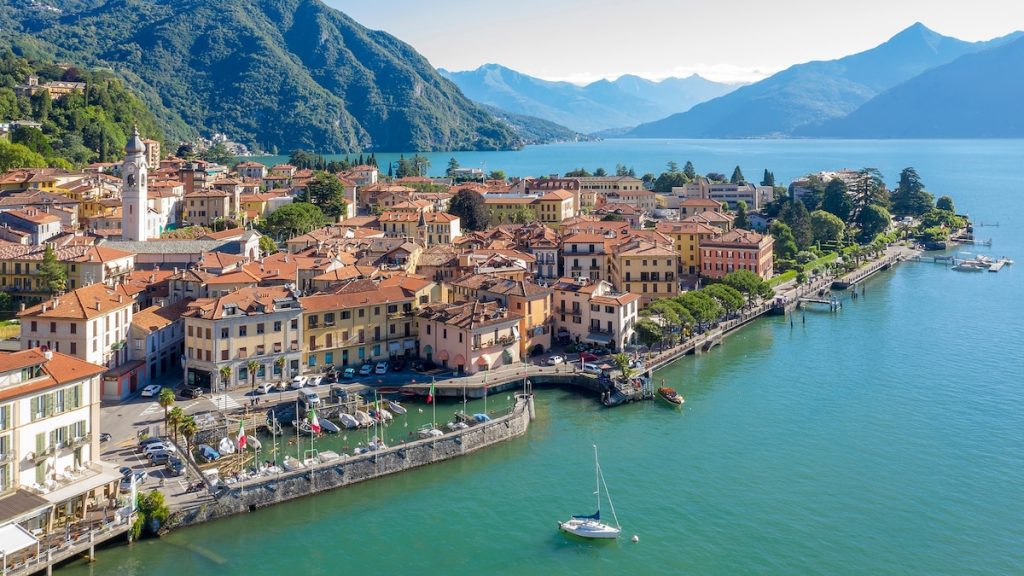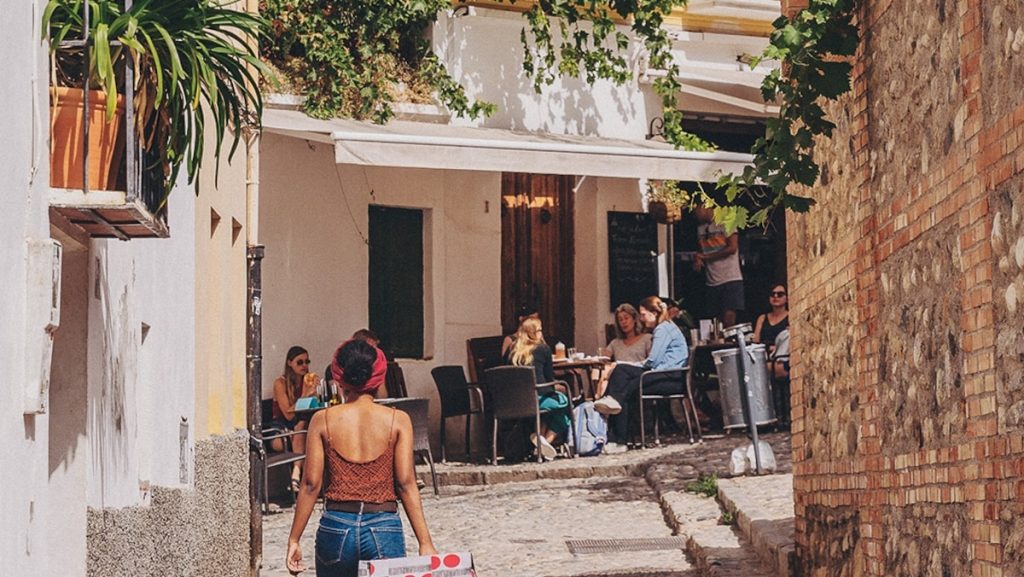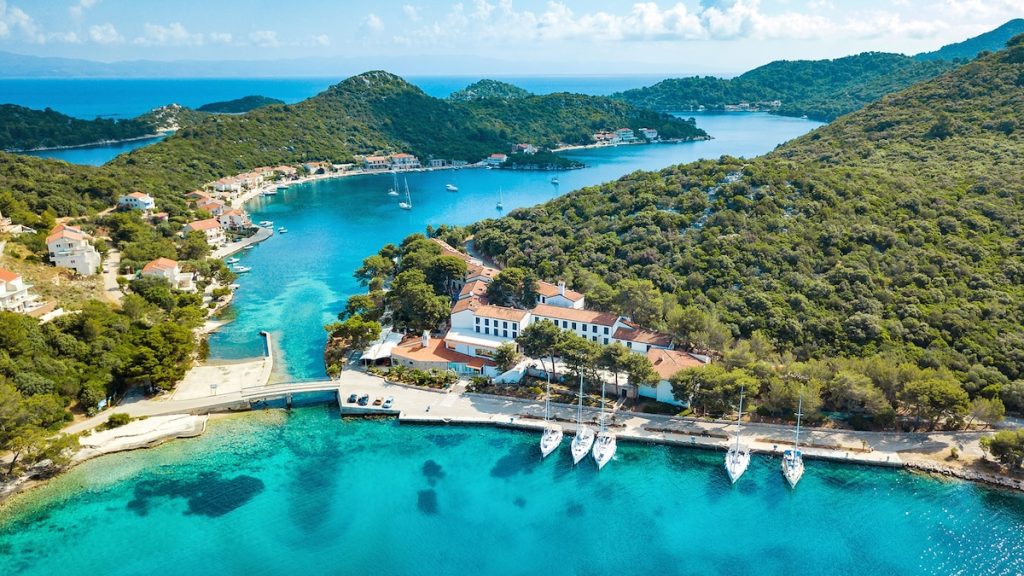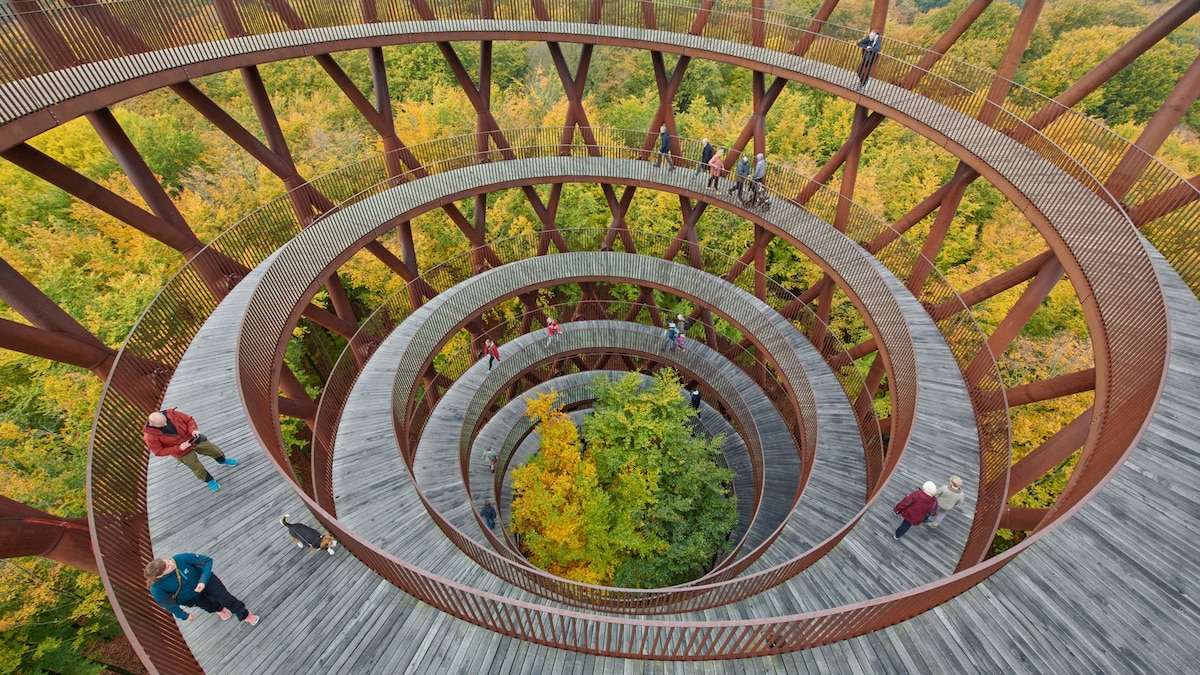Now Reading: How to save a desert oasis—before it vanishes completely
-
01
How to save a desert oasis—before it vanishes completely
How to save a desert oasis—before it vanishes completely
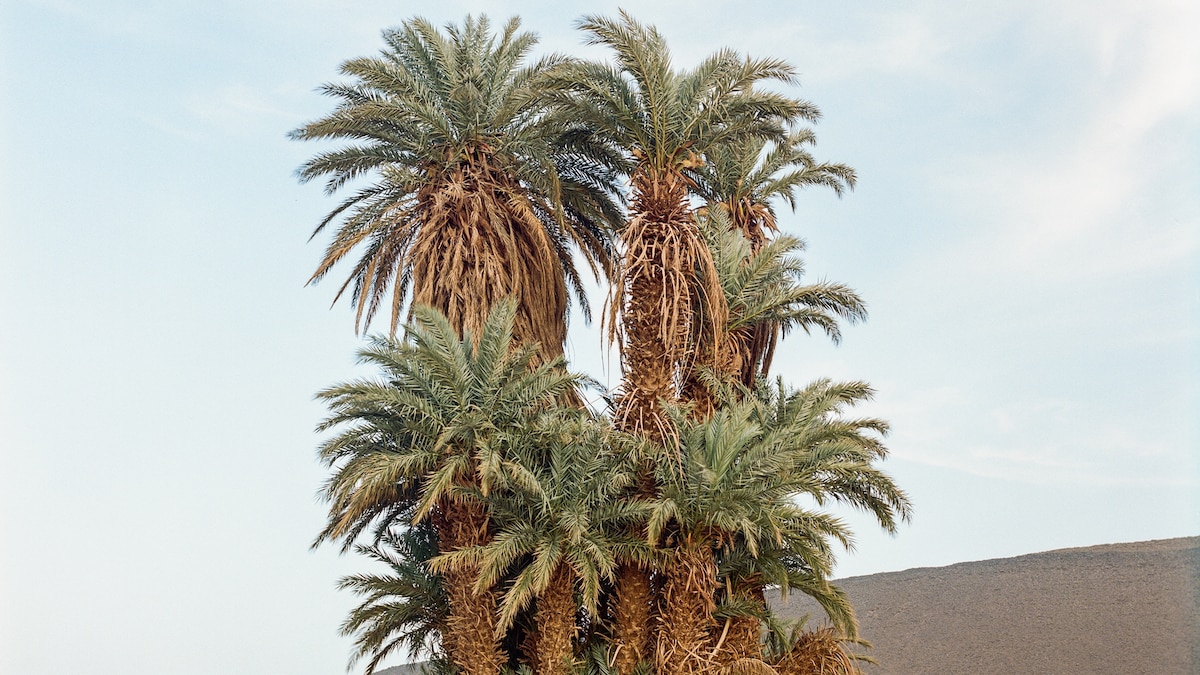
Driving south out of the Atlas Mountains into Morocco’s Drâa Valley, travelers find that the landscape becomes increasingly stark until the paved national highway vanishes into the desert at the oasis town of Mhamid el Ghizlane.
Sometimes known as the gateway to the Sahara, Mhamid and its surrounding villages are home to about 6,100 people. For generations, the settlement has straddled the Drâa River, with wispy tamarisk trees lining the road on the north bank of the river and palm plantations spreading out to the south. But today the concrete bridge built to span the water rises over a dry riverbed of sand and gravel. Tourists still come to Mhamid, drawn to camel treks, camping, and sandboarding. They arrive by the busload and make their way to hotels that offer swimming pools and massages.
Halim Sbai, 55, tall and bespectacled, with dark, gray-flecked hair, was born in the town. Like a lot of residents, he remembers a different Mhamid. Greener. Lusher. When he was a kid, he herded livestock beneath the dense shade of thick groves of palm trees and fished in the Drâa, Morocco’s longest river, as it wound lazily through town. In the decades since, he has watched the oasis shrivel as the rain has all but stopped and the river has dried up. The thick forests of date palms have withered and thinned, and the fields of fruit and olive trees have produced less and less each year. Most young people have escaped for a better life elsewhere, leaving houses and entire neighborhoods to be swallowed by the encroaching dunes.
“When there is no water, nothing green, the sand becomes very strong, a very fast enemy,” says Sbai. “It takes a lot of land.” The desert is pressing in from every direction. According to Sbai, the outer edge of the oasis moves inward by more than 300 feet each year. Sometimes Sbai worries that he might be witnessing the end of the oasis altogether and, with it, an ancient ecosystem—and the nomadic culture and traditions it enables—that he holds dear.
For thousands of years people have lived and thrived in oases, developing a complex agricultural system finely calibrated to the harsh desert environment, with its water scarcity and ecological fragility. By some measurements, oases occupy 740,000 square miles worldwide—roughly three times the area of Texas—and in North Africa and Asia sustain an estimated 150 million people. In Morocco, oases are home to one million people. The stresses of contemporary climate change are accelerating with increasing aridity, temperatures, and desertification, as well as destructive floods and wildfires, yet Sbai is an optimist steeped in nomadic culture, and he believes that oases contain the seeds of their own salvation.
What can you offer young people to make them stay?
Thomas Duncan, co-founder of Joudour Sahara music school
What is an oasis? An imagined place? A mythical one? An isolated, palm-fringed pool in the desert? A place of safety? Somewhere desperate travelers might find relief, or dismay if the oasis turns out to be a mirage? Ecologically, it is simply an area made fertile by a water source in an otherwise harsh and arid environment. But human ingenuity has transformed oases into complex civilizations.
Ten thousand years ago, northern Africa was hammered by strong monsoon rains and the Sahara was verdant. But the climate gradually shifted, and the grasslands and rivers dried up. In the newly unforgiving desert landscape, water was scarce. Where people found it, they exploited it and created pockets of habitable land that made life not just possible but prosperous, providing homes and livelihoods to many thousands. Radiocarbon-dated barley and wheat grains, as well as millstones used to grind flour, show that oases were already developing in the Drâa Valley during the fifth century.
As oases grew, so too did Saharan trade. Date palms, the hallmark species of the oasis, are drought and heat resistant, and grow readily in the desert wherever there’s water close to the surface. But it takes huge amounts of labor and engineering to successfully cultivate them. These costs were in part met by the salt, gold, and textile traders who plied the caravan routes between Marrakech and Timbuktu. Oases were a place for them to rest and restock before their next expedition. As Sbai puts it, “You can’t be a nomad all the time, just moving everywhere. You need to stop, relax.”
(Journeying along an ancient trading route in the Moroccan Sahara.)
The essential ingredients of the oasis are date palms and people, and neither flourishes without the other. The thick fronds of the date palm’s crown provide a shady canopy beneath which other species can grow, protected from the punishing sun. Scientists have described the date palm as a keystone species for the ingenious three-tiered agricultural ecosystem it anchors. The tree produces valuable dates, and the humid, temperature-controlled microclimate beneath the dense overstory fosters other crops, such as fruit, olive, and henna trees. At ground level, beans, wheat, barley, and alfalfa grow protected from the wind and sand by the palm’s tough trunks.
Mohamed Ait-El-Mokhtar, professor of plant physiology and biotechnology at Hassan II University in Casablanca, who has studied the impact of climate change on oasis ecosystems, describes the date palm as “the umbrella” beneath which all else thrives. “If we want to sustain this structure in the oasis, we have to sustain the date palm,” he says.
Oases worked, in other words, because they stayed in balance. Rainfall in this part of Morocco was always sparse, but still the Drâa was filled with snowmelt and rainwater that flowed more than 11,000 feet down from the peaks of the High Atlas Mountains. Farming communities worked together to dig and maintain geometric networks of irrigation channels to siphon river water into the palm plantations. They used stone, mud bricks, and rammed earth to build warren-like fortified homes and villages—known as ksars and casbahs—and expanded their agricultural lands into the increasingly irrigated desert.
But climate change has devastated many oases, and it’s only expected to get worse. Temperatures in Morocco are projected to rise by as much as nine degrees Fahrenheit by the end of the century, and rainfall to be reduced by 30 to 50 percent. Extreme flooding is on the rise, and government figures show that around 10,000 palm trees burn every year in wildfires.
Near Mhamid, the palms survive largely because farmers use groundwater extracted with individual solar pumps to irrigate their plots. They are cheap to run and make extracting water easy, but they are a short-term fix. The brackish groundwater increases the salinity of the soil, making growing crops even more difficult; and pulling straight from the aquifer can put it out of reach of even the deepest palm tree roots. “As long as people keep pumping groundwater with solar, they think there’s no problem,” says Sbai. But “when you use solar, you can very quickly kill the oasis.”
Abdelkarim Bannaoui, a 48-year-old with a thick mustache and dressed in a white tunic and turban, has farmed in Mhamid all his life. When he was growing up, there were periods of drought that would decimate crops, he says, “but the palms stayed strong.” Now even they wither, and date yields are falling. The palm cover on his acre plot is scant, and the fruit trees are gone. Unable to rely on the river or rain for irrigation, he uses groundwater pumped from his own well at the far end of his land, and every few years he must dig it deeper. In 1996 a 23-foot well was enough; now it reaches to 52 feet.
“It is in God’s hands,” Bannaoui says, “but as I see it, there is no future for farming here because of the water. In agriculture, you always lose.” He expects that eventually his three young sons, all of whom are under 10, will abandon farming and the oasis.
(Ancient cannabis ‘burial shroud’ discovered in desert oasis.)
In a destructive feedback loop, migration hastens the oasis’s surrender to the desert. The local population has fallen by a fifth in the past 20 years, and as mostly young people leave, it’s harder for the aging population that remains to maintain the palm trees and irrigation channels. “There is nothing to do here because there’s no rain, so people emigrate,” says 61-year-old farmer Abdelaali Lahbouch, whose three sons have left. “There is nobody around, just us old people.”
If we want to sustain this structure in the oasis, we have to sustain the date palm.Mohamed Ait-El-Mokhtar, professor of plant physiology
In his long white djellaba and purple scarf, Lahbouch takes me to see the sand-filled irrigation channels and sand-covered fields nearby. “There’s nobody here to help us work,” he says, shrugging. Neglected and abandoned plots let the desert in, and a few days of strong wind is all it takes to coat the earth with sand, starting the process of soil degradation.
As we walk around Bounou, one of Mhamid’s satellite villages, Sbai tells me that of the 200 families that used to live here, only five remain. The rest, he says, have seen their homes taken by the desert. There are no longer enough residents to clear the sand-clogged alleys and passages, nor to maintain and repair the rammed-earth walls of the ksar, which are crumbling and collapsing like a sandcastle in a rising tide. One of the few still living here is 68-year-old Belaaid Lagnaoui, a thick-set farmer who long ago ceded the ground floor of his mud-walled house to the desert. From his perch upstairs, he uses the flashlight on his phone to peer at the sand-filled hall below.
If there is any chance of rescuing Mhamid and charting a path toward saving other oases across the world, it might come from a small, two-acre plot on the edge of town, where Sbai has constructed a laboratory of pilot projects aimed at holding back the desert and holding on to water.
You May Also Like
Acacia and tamarisk trees sprout from shallow circular planters called Waterboxxes that were designed by a Dutch horticulturalist named Pieter Hoff. These planters reduce the amount of water young saplings need and act as a barrier against the desert. For years, Sbai has worked with a Dutch foundation called Sahara Roots planting hundreds of trees around Mhamid to strengthen what he calls “the natural system to stop the sand.” He has also introduced pipes for drip-fed irrigation, which snake across vegetable beds and use far less water than the traditional method of flood irrigation that ceased to make sense when the river stopped flowing.
(They were seeking a mythical oasis. They found a Stone Age surprise instead.)
These solutions, though modest in scope, are all aimed at restoring and recalibrating the balance between the people of the oasis and the changing landscape in which they live. Take the solar pumps. Climate change has made them necessary, but when they’re privately owned, as most currently are, people take what they want, regardless of the needs of others. Sbai has been pushing local farmers and government agencies to reconsider how the pumps are used. “In nomadic culture,” he says, “you need to share everything.” Thanks in part to Sbai’s lobbying, Morocco’s National Agency for the Development of Oasis Zones and Argan Trees is working to install community solar pumps and wells to replace private ones in Mhamid and elsewhere so that water can once again be managed communally and shared equitably.
Of course, none of that will matter if the entire population of Mhamid leaves for better opportunities elsewhere. So in 2016, Sbai co-founded the Joudour Sahara music school with Thomas Duncan of the Playing for Change Foundation, a California nonprofit that uses music to bring communities together. “We asked, What can you offer young people to make them stay?” says Duncan. Their answer is to celebrate, share, and preserve knowledge of the cultural traditions of the desert and the oasis. Children attend weekly music classes in the traditional Ahidous, Gnawa, Rokba, Akalal, and Chamra styles. The school has since given rise to the Zamane Festival, which features hundreds of musical artists from across the Sahara and attracts thousands of visitors.
The school’s new home, the Joudour Sahara cultural center, was completed last year and consists of two modern rammed-earth buildings, designed by Moroccan architect Aziza Chaouni. One is a sunken amphitheater for musical performances, the other a classroom with a subterranean cistern. The two structures are connected by underground water pipes. Rainwater is collected and stored in the reservoir. “Real resilience is saving every drop of rainwater,” says Sbai. A riad-style building for visiting musicians is under construction nearby. “The idea was to revive traditional materials that completely make sense in the area,” says Chaouni, “to build pride in traditional architecture, not to just copy the past but be innovative.”
Sbai often talks about the importance of nomadic culture, the need to live within the constraints of nature and the desert’s tough environment, to share resources as a community, to not waste anything. He says these old ways are key to the restoration and survival of the oasis in the face of climate change.
(This desert oasis is a time capsule of Egypt’s grand past.)
Sbai started as a tour operator before expanding into environmental and cultural activism. He still believes in the value of tourism to the oasis economy, but, he wonders, what kind of tourism? The kind that builds with concrete, fills swimming pools with precious water, and tears up the dunes for gasoline-fueled kicks? Or something slower and simpler, that treads more lightly on the land, exists in harmony with the landscape, and draws on the rich culture and history of the oasis?
One cold, clear evening, he reclines against a thick pouf on a handwoven carpet laid out by a fire. One of his guests is a Tuareg desert blues guitarist visiting the music school from Mauritania, who carefully serves tea poured from a small painted teapot heated in the fire’s embers. A waxing moon shines bright above, and a thick stand of date palms is silhouetted against the indigo sky. “We have the stars and a fire,” Sbai says. “We are the luckiest people on Earth.” The oasis is fragile, its future uncertain, but it is where Sbai comes from and where he belongs, and he is determined to save it.
A version of this story appears in the June 2025 issue of National Geographic magazine.
Based in Woodbridge, England, Tristan McConnell reported from Morocco for this story. His stories have been published in GQ, Emergence, Aeon, Harper’s, and Vox.
An Explorer since 2020, M’hammed Kilito photographed oases in Morocco and Saudi Arabia for this story. Kilito lives in Rabat, Morocco, and his work has been published in the Atlantic, El Pais, and the British Journal of Photography. This is his first story for National Geographic.
The nonprofit National Geographic Society, committed to illuminating and protecting the wonder of our world, funded Explorer M’hammed Kilito’s work. Learn more about the Society’s support of Explorers.












